Abstract
Protamine is used for titration of heparin in vitro for diagnosis of hemorrhagic states and for neutralization of heparin in vivo to terminate heparinization. The protamine equivalent varies with the heparin preparation, conditions of testing and, in vivo, with the amount of heparin present in the circulation. The latter depends on time after administration and the hemodynamic and metabolic state of the patient. Protamine, when injected rapidly, will release histamine and agglutinate platelets. Bleeding (spontaneous hemorrhage) demonstrates a multiple breakdown of hemostatic mechanisms due to surgical stress, drugs, exposure of the blood to foreign surfaces, etc. Simple rules for the amount of protamine required for an individual patient based on clinical judgement will be satisfactory in most cases. When hemostasis is not achieved, it must be appreciated that heparin and protamine are only part of a complex deteriorating situation.
Full text
PDF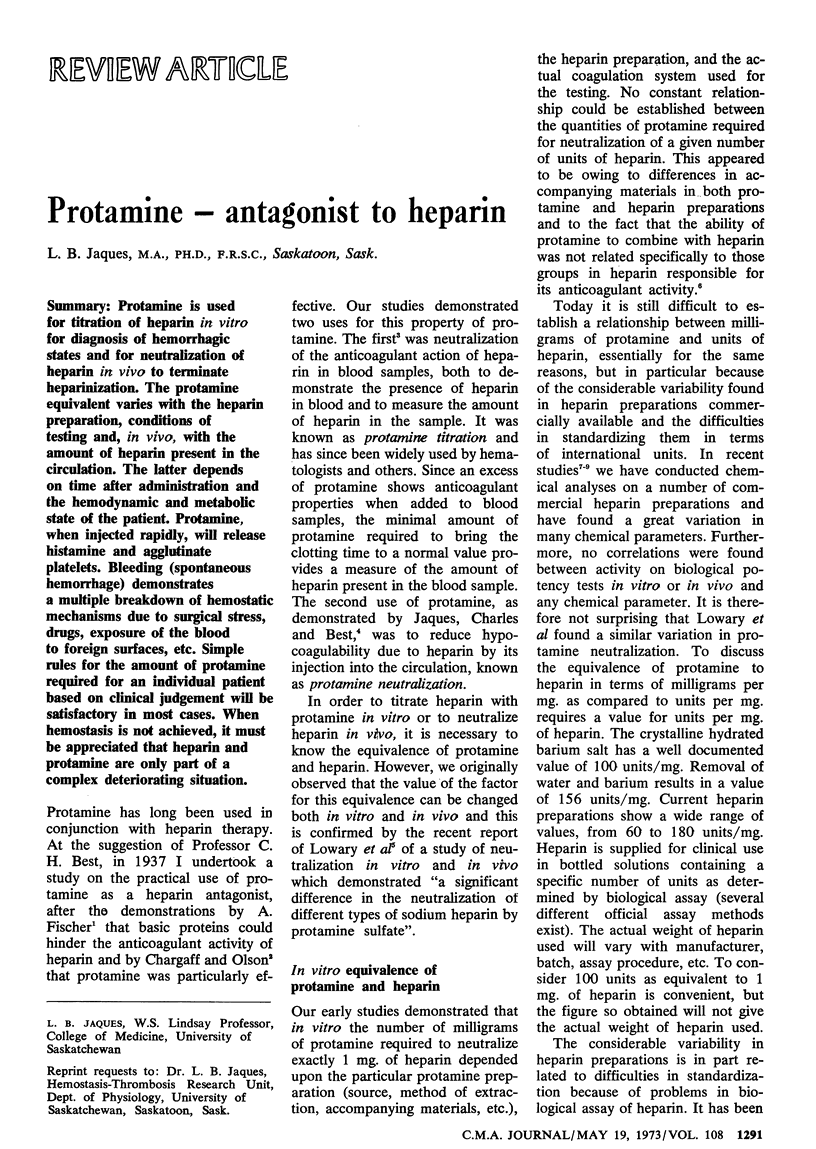
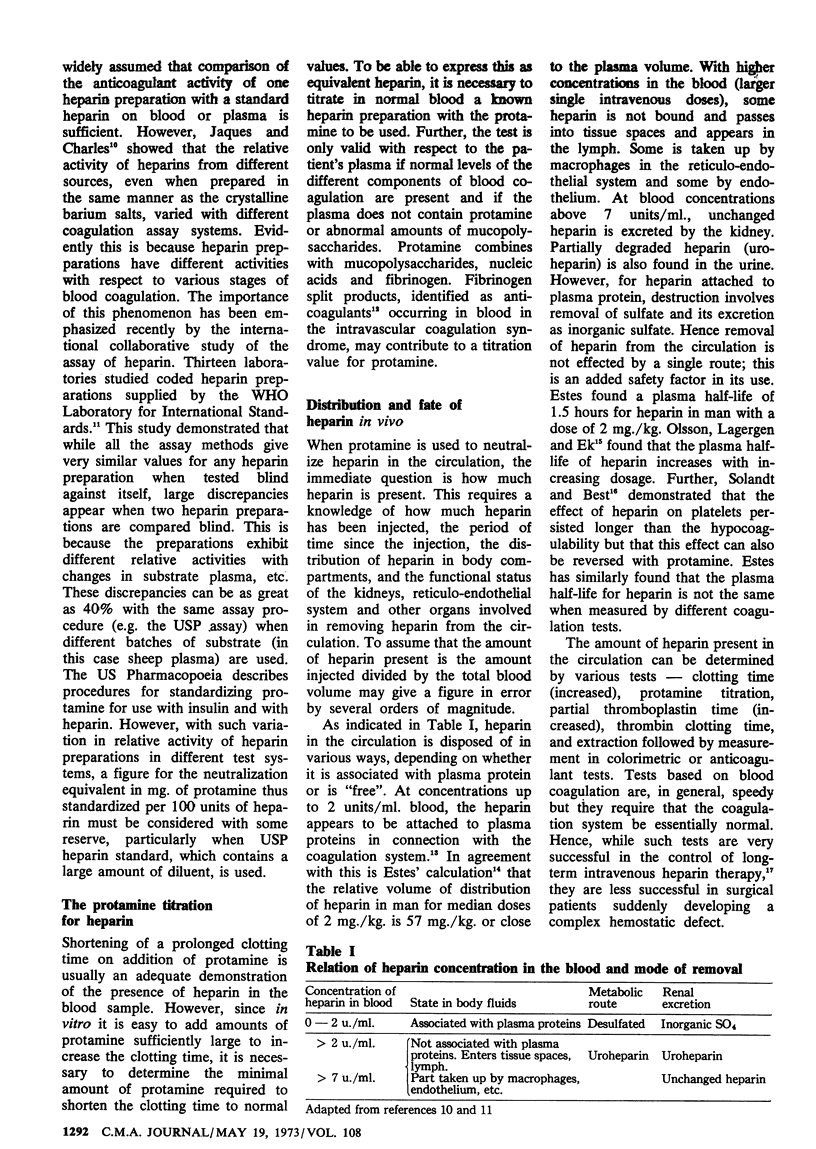
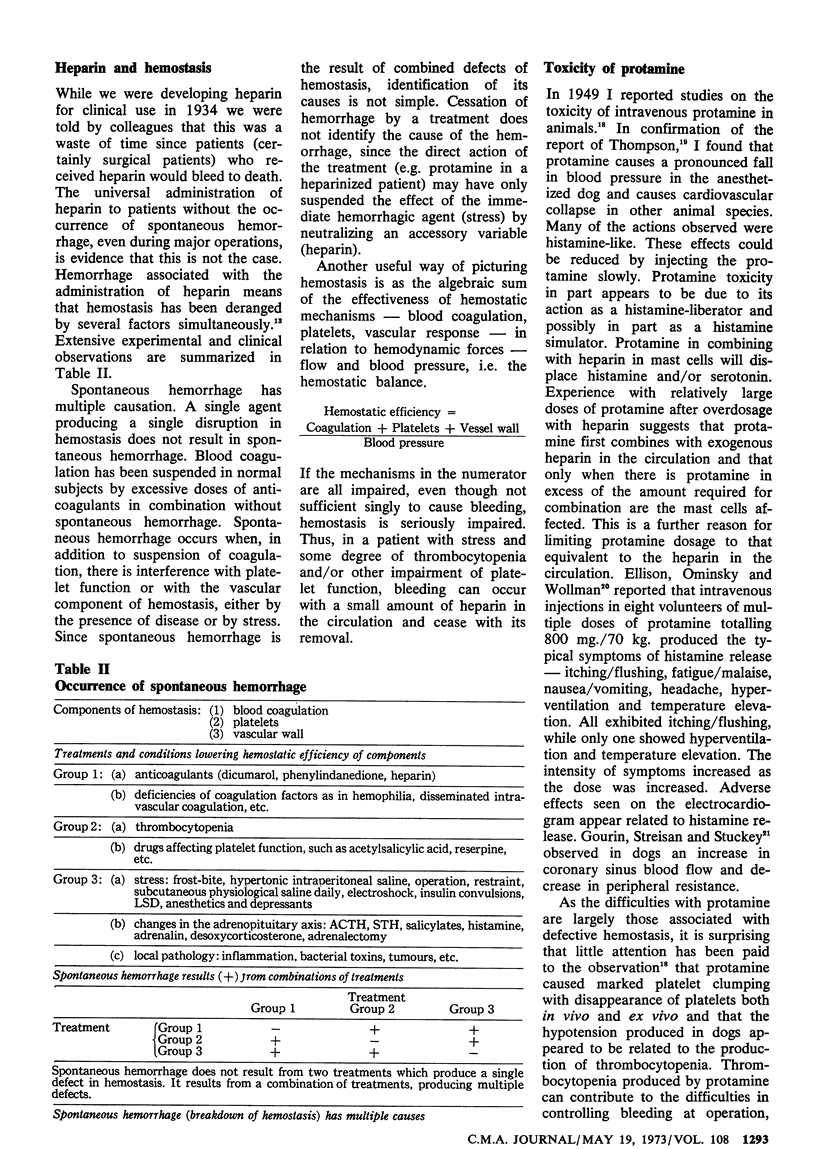
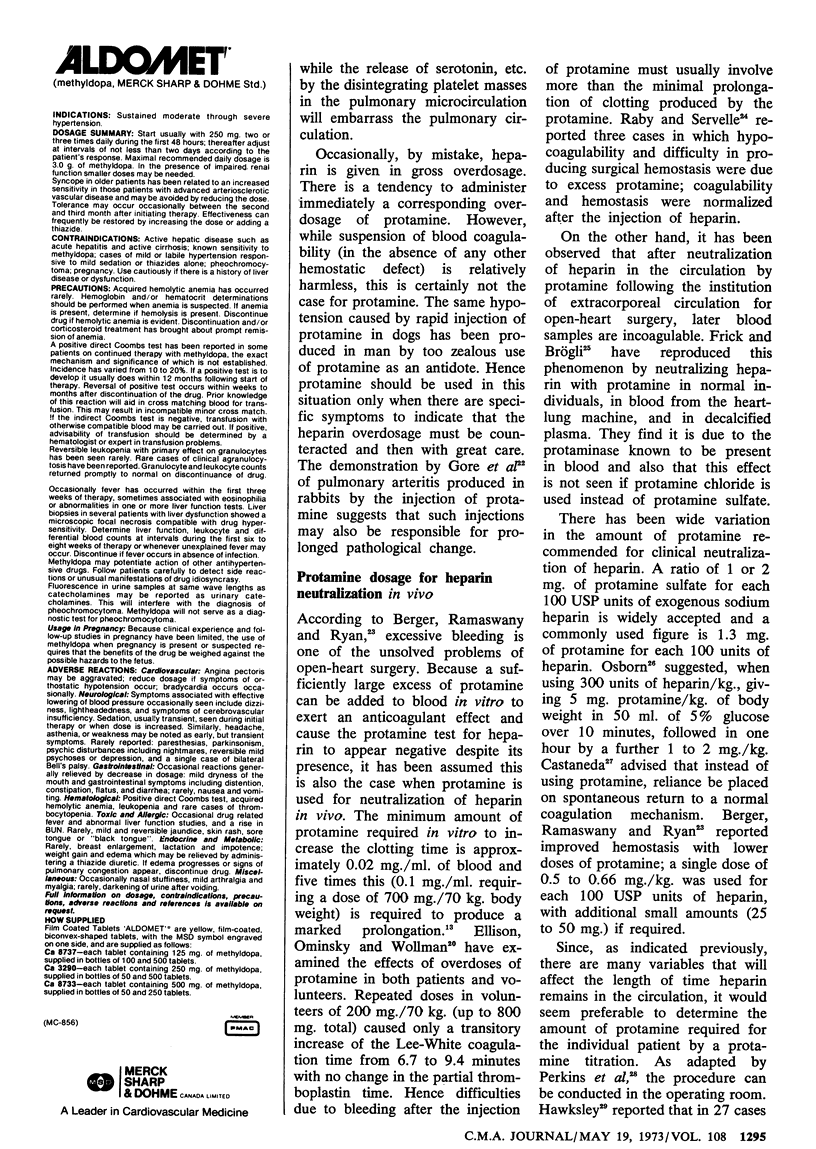
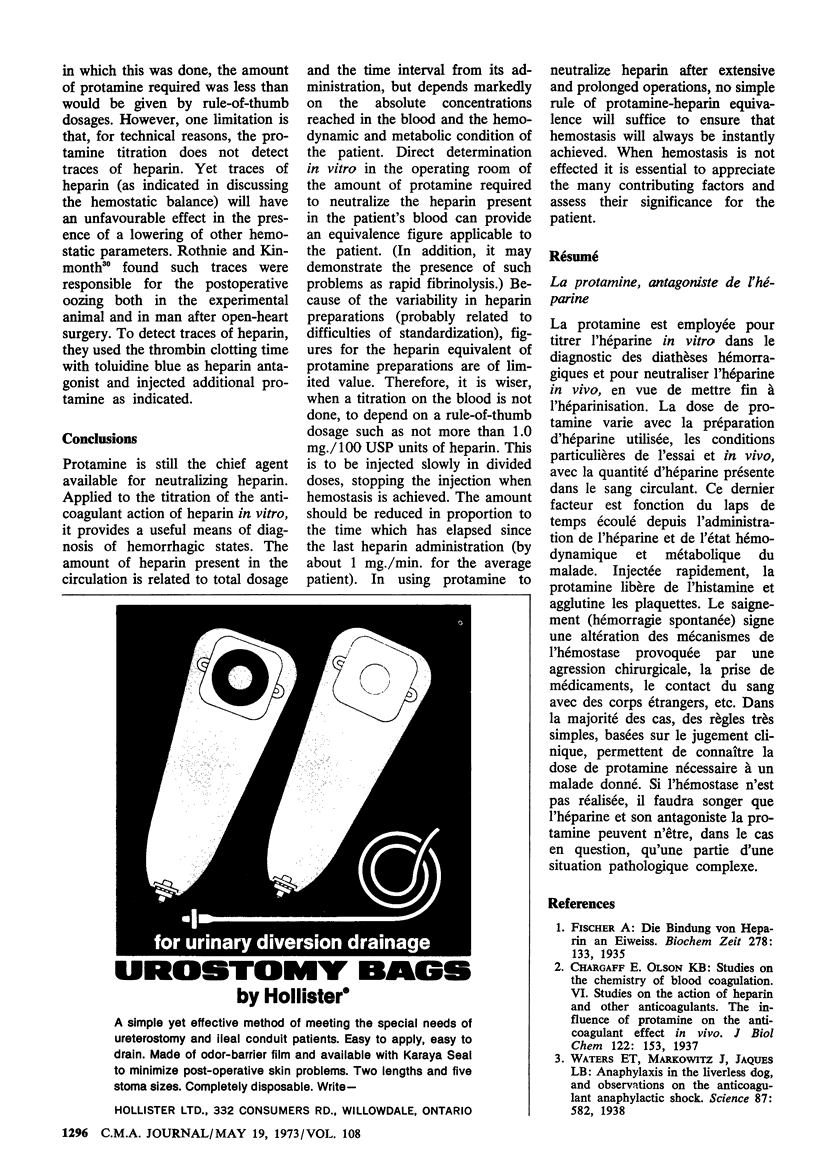
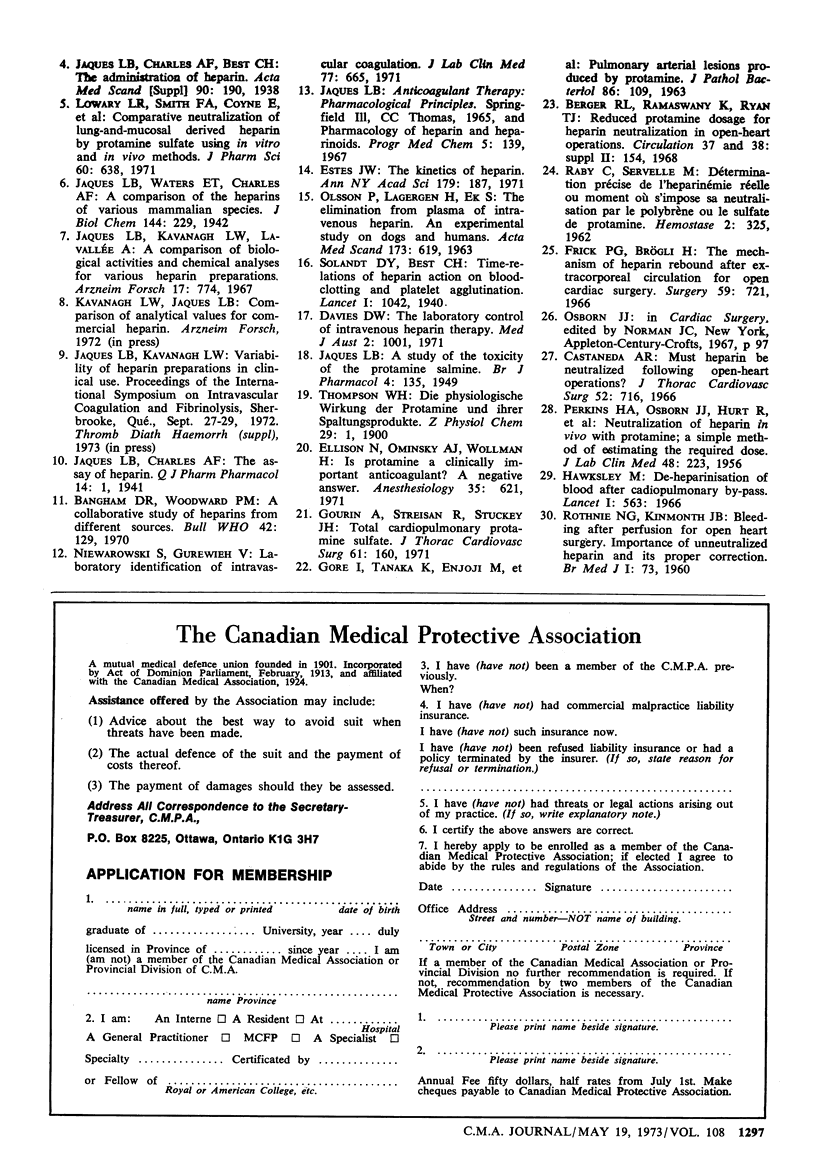
Selected References
These references are in PubMed. This may not be the complete list of references from this article.
- Bangham D. R., Woodward P. M. A collaborative study of heparins from different sources. Bull World Health Organ. 1970;42(1):129–149. [PMC free article] [PubMed] [Google Scholar]
- Castaneda A. R. Must heparin be neutralized following open-heart operations? J Thorac Cardiovasc Surg. 1966 Nov;52(5):716–724. [PubMed] [Google Scholar]
- Davies D. W. The laboratory control of intravenous heparin therapy. Med J Aust. 1971 Nov 13;2(20):1001–1005. doi: 10.5694/j.1326-5377.1971.tb92677.x. [DOI] [PubMed] [Google Scholar]
- Ellison N., Ominsky A. J., Wollman H. Is protamine a clinically important anticoagulant? A negative answer. Anesthesiology. 1971 Dec;35(6):621–629. doi: 10.1097/00000542-197112000-00013. [DOI] [PubMed] [Google Scholar]
- Estes J. W. The kinetics of heparin. Ann N Y Acad Sci. 1971 Jul 6;179:187–204. doi: 10.1111/j.1749-6632.1971.tb46899.x. [DOI] [PubMed] [Google Scholar]
- Frick P. G., Brögli H. The mechansim of heparin rebound after extracorporeal circulation for open cardiac surgery. Surgery. 1966 May;59(5):721–726. [PubMed] [Google Scholar]
- Gourin A., Streisand R. L., Stuckey J. H. Total cardiopulmonary bypass, myocardial contractility, and the administration of protamine sulfate. J Thorac Cardiovasc Surg. 1971 Jan;61(1):160–166. [PubMed] [Google Scholar]
- Jaques L. B., Kavanagh L., Lavallée A. A comparison of biological activities and chemical analyses for various heparin preparations. Arzneimittelforschung. 1967 Jun;17(6):774–778. [PubMed] [Google Scholar]
- Jaques L. B. The pharmacology of heparin and heparinoids. Prog Med Chem. 1967;5:139–198. doi: 10.1016/s0079-6468(08)70443-0. [DOI] [PubMed] [Google Scholar]
- Lowary L. R., Smith F. A., Coyne E., Dunham N. W. Comparative neutralization of lung- and mucosal-derived heparin by protamine sulfate using in vitro and in vivo methods. J Pharm Sci. 1971 Apr;60(4):638–640. doi: 10.1002/jps.2600600436. [DOI] [PubMed] [Google Scholar]
- Niewiarowski S., Gurewich V. Laboratory identification of intravascular coagulation. The serial dilution protamine sulfate test for the detection of fibrin monomer and fibrin degradation products. J Lab Clin Med. 1971 Apr;77(4):665–676. [PubMed] [Google Scholar]
- OLSSON P., LAGERGREN H., EK S. The elimination from plasma of intravenous heparin. An experimental study on dogs and humans. Acta Med Scand. 1963 May;173:619–630. doi: 10.1111/j.0954-6820.1963.tb17446.x. [DOI] [PubMed] [Google Scholar]
- PERKINS H. A., OSBORN J. J., HURT R., GERBODE F. Neutralization of heparin in vivo with protamine; a simple method of estimating the required dose. J Lab Clin Med. 1956 Aug;48(2):223–226. [PubMed] [Google Scholar]
- RABY C., SERVELLE M. [Exact determination of the actual blood heparin content at the moment when it is neutralized by polybrene or protamine sulfate]. Hemostase. 1962 Dec;2:325–328. [PubMed] [Google Scholar]
- ROTHNIE N. G., KINMONTH J. B. Bleeding after perfusion for open heart surgery. Importance of unneutralized heparin and its proper correction. Br Med J. 1960 Jan 9;1(5166):73–78. doi: 10.1136/bmj.1.5166.73. [DOI] [PMC free article] [PubMed] [Google Scholar]
- Waters E. T., Markowitz J., Jaques L. B. ANAPHYLAXIS IN THE LIVERLESS DOG AND OBSERVATIONS ON THE ANTICOAGULANT OF ANAPHYLACTIC SHOCK. Science. 1938 Jun 24;87(2269):582–583. doi: 10.1126/science.87.2269.582-a. [DOI] [PubMed] [Google Scholar]


